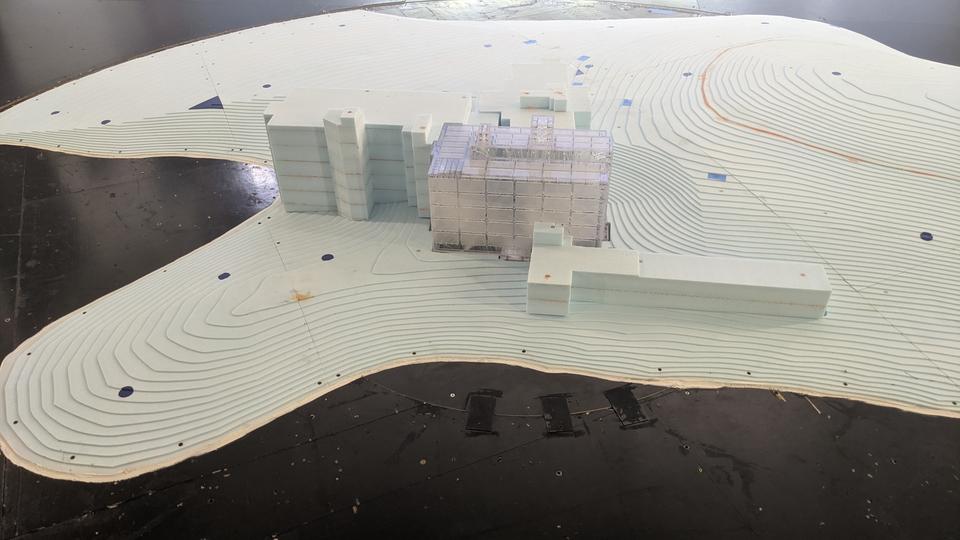Spotlight: NIST Researchers Are Helping Make Communities More Resilient Through Wind Tunnel Testing of Building Models

Communities can prepare for extreme weather and climate-induced disasters, such as hurricanes, in a number of ways. For example, certain buildings, such as storm shelters and hospitals, can serve as places for individuals to seek shelter or receive emergency care. But it’s important that these buildings can withstand the pressures and forces generated from a hurricane.
NIST researchers are helping by evaluating building structures through wind tunnel testing — a method that generates strong airflows to test an object’s ability to withstand powerful forces.
Researchers built models of the surrounding landscape of specific regions in Puerto Rico, known for being a highly mountainous area, as well as two hospitals, and did wind tunnel testing at the University of Florida. They measured the pressures and forces on the scaled models to evaluate the effect of wind pressure exerted on these buildings.
The work is part of an ongoing study launched after Hurricane Maria struck Puerto Rico in 2017. The study’s objective is to recommend improvements in building codes and standards so communities can be better prepared for future natural disasters.
Researchers chose these models to see how mountainous regions, such as those in Puerto Rico, caused winds to speed up around those building sites.
These models can help evaluate the standards used to design current buildings and determine how they can be improved upon to make communities around the U.S. more resilient against the next disaster.
Follow us on social media for more like this from all across NIST!

